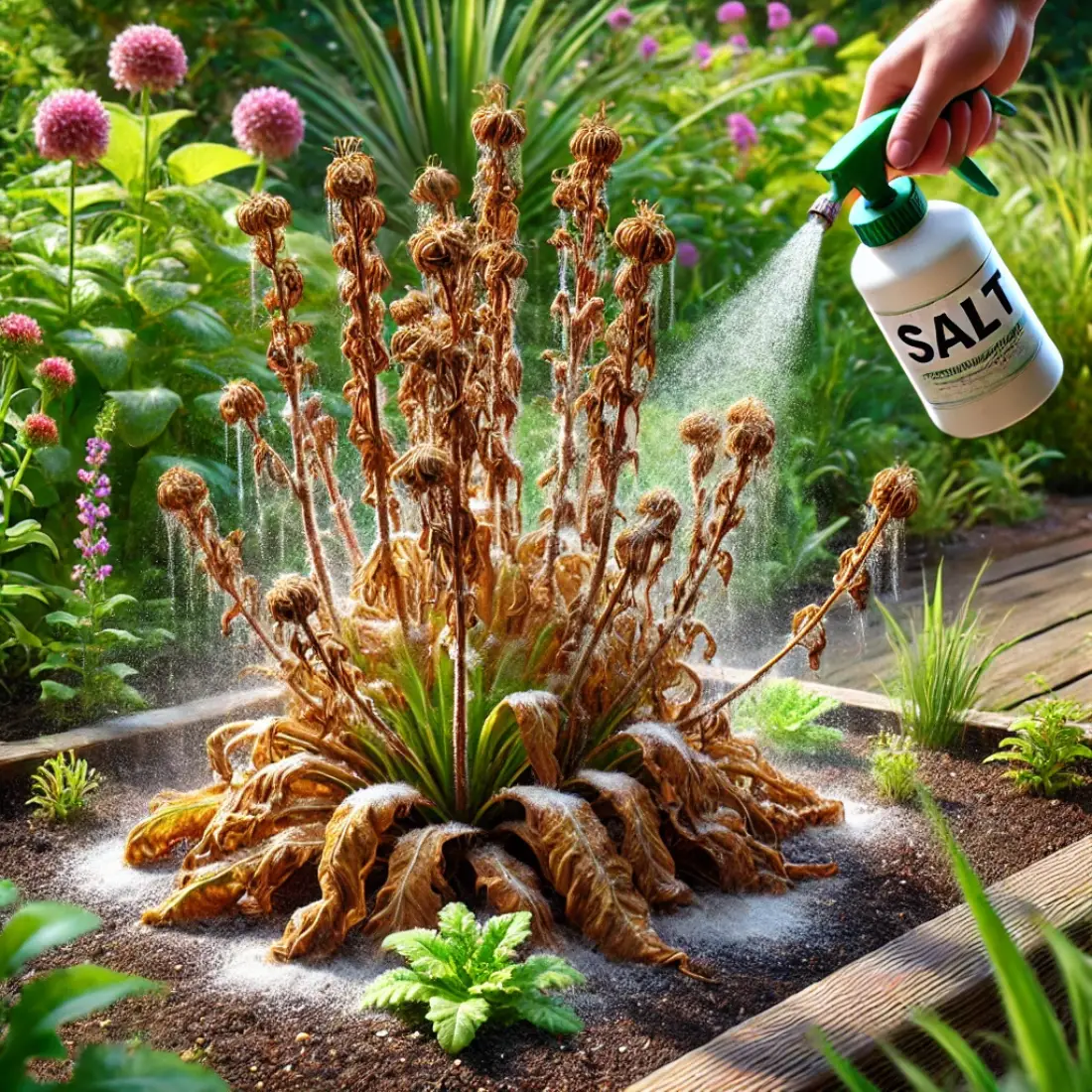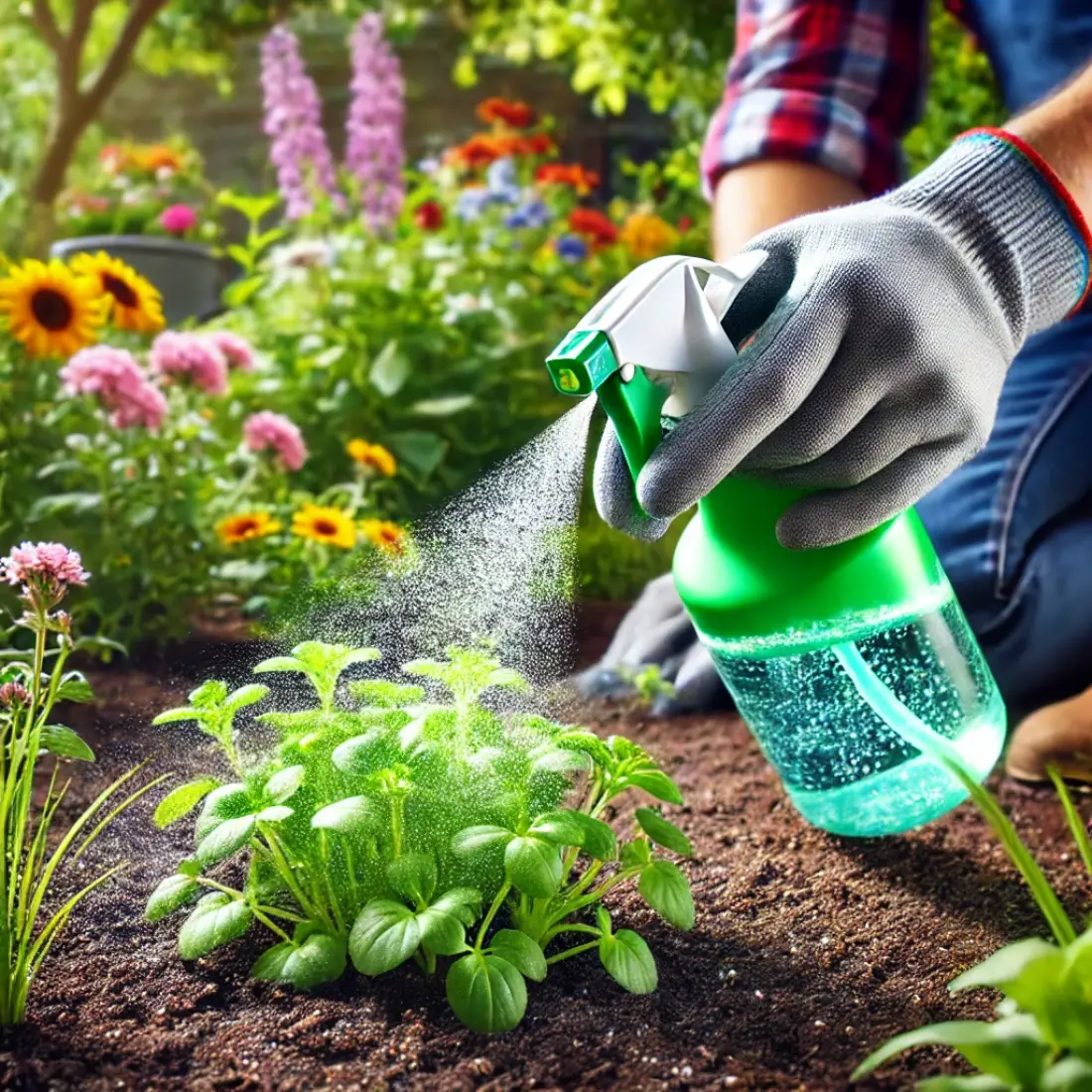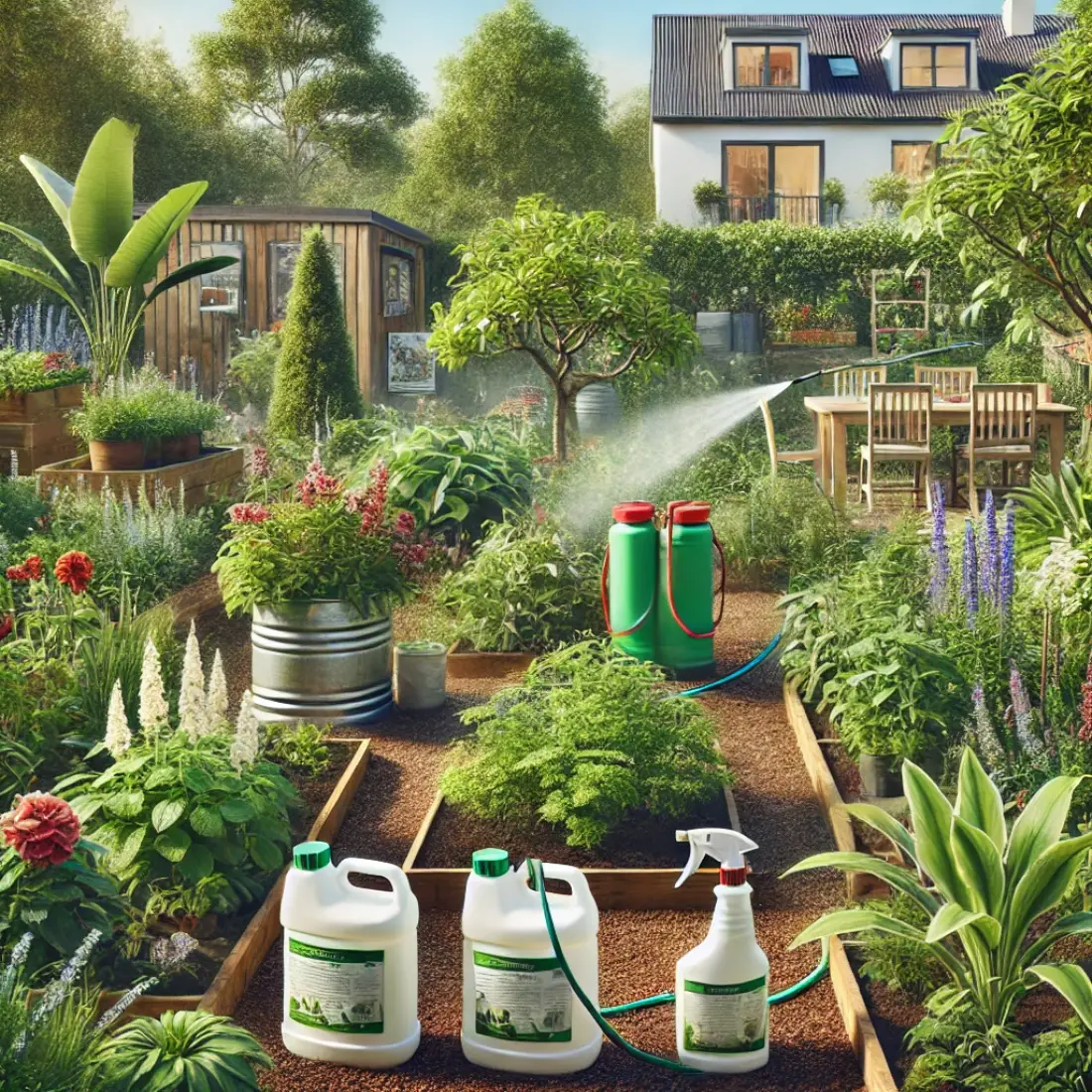Managing weeds is a common challenge for gardeners and homeowners. While chemical herbicides are available, many prefer natural and eco-friendly alternatives. One such solution is using salt, which is simple, affordable, and effective.
Salt kills weeds by dehydrating them and disrupting their cellular function. This natural method reduces the need for harsh chemicals, making it safer for the environment, pets, and humans. Additionally, salt is readily available and easy to use, making it a practical choice for weed control.
How Salt Kills Weeds
Salt, or sodium chloride, is an effective and natural herbicide that works by disrupting the water balance within plant cells. Here’s how it kills weeds:
Dehydration: Salt draws water out of plant cells through a process called osmosis. When salt is applied to weeds, it absorbs moisture from the leaves and roots, causing the plants to dehydrate and die.
Cellular Disruption: High concentrations of salt can interfere with the cellular processes of plants. It disrupts the nutrient uptake and damages the cell membranes, leading to the collapse of cellular structures.

Soil Impact: Salt also affects the soil environment around the weeds. It can create an inhospitable environment for plant growth by altering the soil’s chemical balance. This prevents new weeds from germinating in the treated area.
Selectivity: While salt is effective at killing weeds, it is non-selective and can harm any plant it comes into contact with. Therefore, it should be used carefully, targeting only the unwanted vegetation.
Environmental Considerations: Using salt in small, controlled amounts minimizes its impact on the surrounding environment. However, excessive use can lead to soil degradation and harm beneficial plants and microorganisms. Therefore, it’s crucial to apply salt solutions judiciously and avoid over-application.
Preparing the Salt Solution
Creating an effective salt solution for killing weeds is straightforward.
Ingredients and Materials Needed
- Salt: Table salt or rock salt.
- Water: Tap water or distilled water.
- Optional Additives: Vinegar and dish soap can enhance the solution’s effectiveness.
- Mixing Container: A bucket or large bowl.
- Spray Bottle: For easy application.
Step-by-Step Preparation Guide
Measure the Ingredients:
- For a basic solution, mix 1 cup of salt with 1 gallon of water.
- For a stronger solution, mix 2 cups of salt with 1 gallon of water.
- Optionally, add 1 cup of vinegar and a few drops of dish soap to the mixture. Vinegar increases the acidity, and dish soap helps the solution adhere to the weeds.
Mix the Solution:
- Pour the measured salt into the mixing container.
- Add the water gradually, stirring continuously until the salt is fully dissolved.
- If using vinegar and dish soap, add these to the mixture and stir well.
Transfer the mixed solution into a spray bottle for easy application. If the mixture is too thick, you can dilute it with a bit more water.
Tips for Effective Preparation
- Ensure Full Dissolution: Make sure the salt is completely dissolved in the water to prevent clogging the spray bottle.
- Label the Container: If you prepare more solution than needed, label the container clearly to avoid accidental misuse.
- Store Properly: Store any leftover solution in a cool, dry place away from children and pets.
Application Methods
Applying the salt solution effectively ensures that weeds are targeted while minimizing potential harm to surrounding plants and soil. Here are the key methods and tips for using the salt solution:
Spot Treatment:
- Ideal for small areas or individual weeds.
- Reduces the risk of affecting nearby desirable plants.
Broad Application:
- Suitable for larger areas with widespread weed infestations.
- Requires careful management to prevent soil degradation.
Weather Considerations:
- Apply on a dry, sunny day to enhance the solution’s effectiveness.
- Avoid application before rain, which can dilute the solution and reduce its impact.
Timing:
- Morning or early afternoon is best, allowing the sun to aid in the dehydration process.
- Spring and early summer applications are most effective before weeds mature and seed.
How to Apply the Salt Solution
Using a Spray Bottle:
- Fill the spray bottle with the prepared salt solution.
- Adjust the nozzle to a fine mist for even coverage.
- Spray directly onto the leaves and base of the weeds, ensuring thorough coverage without oversaturating the soil.
Direct Pouring Method:
- For larger weeds or concentrated areas, pour the solution directly onto the base of the plants.
- Be cautious to avoid runoff that can affect nearby vegetation.
Ensuring Even Coverage:
- Apply the solution uniformly to avoid missed spots where weeds can continue to grow.
- Monitor the treated area over the next few days and reapply if necessary.
Tips for Effective Application
- Target Specific Weeds: Focus the application directly on the weeds to minimize the impact on surrounding soil and plants.
- Avoid Windy Days: Wind can carry the salt solution to unintended areas, harming beneficial plants.
- Monitor Weather Forecasts: Choose a dry spell to ensure the solution remains effective on the weeds for as long as possible.
Safety Precautions
When using a salt solution to kill weeds, it’s important to take certain safety precautions to protect yourself and your garden.
First, always wear protective gear. Use rubber or gardening gloves to protect your hands from the salt solution, as prolonged exposure can cause skin irritation. Safety goggles are recommended to prevent accidental splashes from getting into your eyes. Additionally, wear long sleeves and pants to avoid skin contact with the solution.
To protect desirable plants, apply the salt solution directly to the weeds, avoiding any spray or runoff near your garden plants or lawn. Using physical barriers like cardboard or plastic sheets can help shield these plants during application. Additionally, choose a day with no wind to prevent the solution from drifting to unintended areas.
Post-Application Care
After applying the salt solution to kill weeds, proper care is essential to ensure effectiveness and maintain the health of your garden.
Monitoring Weed Response
- Check Results: Observe the treated weeds over the next few days. They should start showing signs of wilting and dehydration.
- Reapplication: If some weeds persist, reapply the salt solution as needed, targeting any remaining or new growth.
Soil Health and Recovery
- Rinse the Area: After the weeds have died, lightly rinse the treated area with water to help dilute any remaining salt in the soil, especially if you plan to plant in that area again.
- Soil Amendments: Consider adding organic matter, such as compost, to improve soil structure and fertility after using salt.
Long-Term Management
- Preventing Reinfestation: To prevent new weeds from growing, consider mulching the treated area. Mulch acts as a barrier, reducing the chances of weed seeds germinating.
- Alternatives for Repeated Use: If weed problems persist, alternate between salt and other natural methods like vinegar or manual removal to prevent excessive salt buildup in the soil.
FAQs about Using Salt to Kill Weeds
How does salt kill weeds?
Salt kills weeds by dehydrating them. It draws water out of the plant cells, disrupting their cellular function and ultimately causing the plant to die.
What type of salt should I use to kill weeds?
Both table salt and rock salt can be used to kill weeds. Table salt is finer and dissolves more easily in water, making it suitable for a spray solution.
How do I prepare a salt solution for killing weeds?
Mix 1 cup of salt with 1 gallon of water. For a stronger solution, use 2 cups of salt per gallon of water. Optional additions include 1 cup of vinegar and a few drops of dish soap.
Is salt safe for all types of weeds?
Salt is non-selective, meaning it can kill any plant it comes into contact with. Use it carefully to target only unwanted weeds and avoid desirable plants.
Will salt harm my soil?
Excessive use of salt can increase soil salinity, making it difficult for plants to grow. Use salt solutions sparingly and rinse the area with water after the weeds die to minimize soil impact.
Can I use salt to kill weeds in my lawn?
It is not recommended to use salt on lawns as it can kill the grass along with the weeds. It’s best used in areas like driveways, walkways, and garden beds where you do not want any vegetation.
How often should I reapply the salt solution?
Monitor the treated area for a few days. If weeds persist, reapply the solution as needed. Be cautious not to over-apply, which can damage the soil.
What precautions should I take when using a salt solution?
Wear gloves, eye protection, and long sleeves. Apply the solution on a calm, dry day to prevent drift and ensure it doesn’t affect other plants or water sources.
Are there alternatives to using salt for weed control?
Yes, alternatives include vinegar, boiling water, mulching, corn gluten meal, and manual removal. These methods can be used alone or in combination for effective weed control.
Can salt solutions be stored for later use?
Yes, store any leftover solution in a clearly labeled container, out of reach of children and pets, in a cool, dry place. Ensure the solution is well-mixed before each use.











